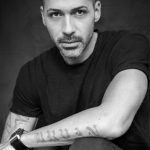With a new collaboration with fellow countryman Kamilo Sanclemente out now we catch up with Colombian artist Mauro Aguirre.
1. Hi Mauro, thanks for joining us today, tell us a bit about yourself, how old are you, where are you living and how long have you been producing music and DJing?
Hello, I am 43 years old and I live in the city of Cali (COL) and have been in the scene for more than 25 years as a DJ, producing music almost 10 years, but professional 3 years ago.
2. How did you discover electronic music and what led you down the path of wanting to be a DJ and producer? What were some of your early inspirations?
The first experience with music that marked me deeply was at 9 years of age when at family parties I used to listen to a song called Rasputin by Boney M. Around the same time Michael Jackson’s Thriller used to be played home at an old turntable we used to own. I remember trying to learn the song’s lyrics and to emulate Michael’s moves. I spent a great deal of time recording radio shows in audio cassettes, especially weekend shows. Radio was back then the only means for listening to what was being played and danced out in the world.
I became very interested in artists who were precursors of innovative styles such as breakdance, a more demanding dance style, which gave a different expression as a new tendency. There were also certain musical structures, very synthetic, which were framed by the acid sounds of machines such as the ROLAND 303 bass liner and the 808 drum machine that totally captured my attention. I rapidly began to discover a new generation of artists with styles that I considered fresh, who caught my attention immediately: TECHNOTRONIC, INFORMATION SOCIETY, DEPECHE MODE, The KLF, were some of the names that ended up filling up me vinyl shelves. It is also very important for me to highlight the unconditional support I have received from my parents since the beginning of my career. It was thanks to them that I was able to acquire my first professional turntable, a Technics 1200Mk2. It quickly became my favorite toy and the instrument trough which my addiction to vinyl developed, which eventually led to the need for starting to create my own tracks.
3. Tell us a bit about the scene in Colombia and more specifically progressive house there.
I believe that the scene in Colombia is still growing. However, and in spite of the commitment by numerous nightclub owners and organizers of music festivals to keep bringing world-class DJs and that the country has been gradually positioning itself as a must-stop destination for international DJs and producers, it remains challenging and expensive for promoters to keep the momentum going, particularly because of the high costs associated with bringing great artists (The exchange rate of the Colombian peso with respect to the American dollar makes it extremely expensive to hire great international artists) Luckly, the Internet is a tool that has brought down many barriers and has allowed the public here to have access to a wider universe of music. Equally, local radio station regularly air on weekends shows specialized in electronic music and all of this is contributing to the further development and dissemination of electronic music among the population.
As far as progressive house, I think it has also been rapidly growing; some people label it as “exquisite” whereas others consider it very “futuristic” or too “refined”. This places a heavy burden on us, the DJs and artists who play it, to press forward in order to spread it out and in order to try to “evangelize” more people into it. This puts us in direct competition with other, more commercial genres such as Techno, EDM, or even pop music.
4. Who are some up and coming Colombian artists to look out for?
There are many artists on the scene, but I would like to mention Golan Zocher , Jonnas B, Soluna just for name some.
5. You’ve got a new release out this week on Clubsonica, a collaboration with the excellent Kamilo Sanclemente. Tell us about the production process behind that track, how you and Kamilo decided to work together and how it ended up on Clubsonica.
Well, I’ve known Kamilo for many years already. As a matter of fact, back in 2007 we have produced several tracks as the duo PROFESSIONAL FLYERS, and although they were heavily influenced by house music, they gave us some level of recognition as producers. We had the great fortune of being included in a wildly successful compilation by DJ/Producer WILLIAM UMANA called LIVE@LE BOY, which included two of our tracks: “Miracles” and “Let’s Get It On”.
With respect to our way for composing music, we don’t really focus on anything in particular or follow a specific method for creating music. Initially, we focus on establishing a groovy cadence of the drums, after we’ve gotten the battery and kick right, we add the keyboards and create backgrounds in order to shape it up. We like to imagine de dance floor while paying special attention to the arpeggios, this a way to know how the crowd feels, how you play with the bass, and above all, at last we make sure that the sound fits perfectly with the label’s style. Thanks to previous collaborations with Kamilo Sanclemente the invitation to be part of Clubsonica did not wait and the result of this collaboration is “Ocean of Storms”.
6. How does it feel to be working with a great label from your home country? What is it about Clubsonica that makes them special for you?
I´m very happy and proud to work with them, It’s worth highlighting that Clubsonica Records has had plenty of confidence on me and have given us plenty of freedom when it comes to creating music. I see them as a label that values and supports local talent not to mention that they count with the support of international artists of the caliber of Hernan Cattaneo, Darin Epsilon, Rick Pierre O’neall, among other. No doubt that Clubsonica has started to attract major attention in the industry and has benefited greatly by the contribution of these true geniuses. I’m sure that their objective is to remain as the top label of its genre in Colombia.
7. How difficult was learning to produce for you in the beginning?
It has been definitely very difficult, from purchasing the equipment and editing software to creating the music itself. Most of my learning has been empirical given to the fact that there were no schools or even tutorials around where you could learn how to produce music or anything of that sort. I guess it was my motivation to create new tracks and be signed one day by a major label what pushed me to constantly learn on my own, not only about the trade but also to be patient and persistent in the face of adversity in order to achieve that which you truly want. Only time and dedication can show you what you are truly capable of.
8. Who was the first big Dj to support your music and how important was that moment in terms of inspiration as well as being validated as an artist?
I should mention, with much respect and admiration, to DJ/Producer William Umana with whom at the beginning of 2000 began to develop a close friendship. Since he traveled constantly outside of Colombia, it was through him that I was able to purchase music from overseas in the form of vinyls. It was also through him that I had a chance to see the world outside of Colombia: through his stories and experiences in clubs and music stores overseas, his exchanges with producers in other countries, the new trends that he observed in other places which he related to me and, in general, through his observations of how the industry worked elsewhere. However, I must say that, above all, the most important thing I learn from him was to respect and love the art of spinning that obsolete format for many others, which I will never be able to replace.
9. What kind of stuff have you been playing in your DJ sets recently? Who are some of your go to artists?
There are many interesting things going on right now, which Dimitry Molosh, Antrim, and Nicolas Petracca are good exponents of. The tendencies they’ve brought are very fresh and once I incorporated them into my sets have made them very dynamic. Red Axes in another very interesting duo who creates a very authentic atmosphere and they have a very interesting sound.
10. What five tracks are you currently loving the most at the moment?
The spectrum of my music is very varied when it comes to entertaining. I don’t really follow a specific pattern and I try to stay away from playing only progressive. There are Deep and Tech house tracks that possess magnific elements, which contribute to more harmonious sets, e.g., Ebertplatz-Andhim, Solar Storm-Phil Kieran, Closure-Habischman, Terra-Manuel dela Mare-Evaporate- Luigi Rocca, Youssef – How Did I Get Here, are just a small sample of how varied my sets can be.
11. What can we expect to hear from you next?
Everyday you learn something new in this business. I have always been on a quest to find my own style. I want to keep exploring. I want to search beyond traditional sounds. I want to combine elements of progressive with the preponderance of House that can lead to the creation of more gooey rhythms. I want to dare to add fresher features to my music, features that are easier to assimilate by my audience and that flow effortlessly but without falling into a specific genre. In short, I want to create a new trend.
‘Ocean Of Storms’ is out now via Clubsonica Records, you can purchase the release: here




